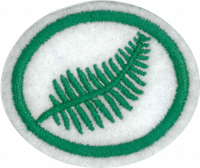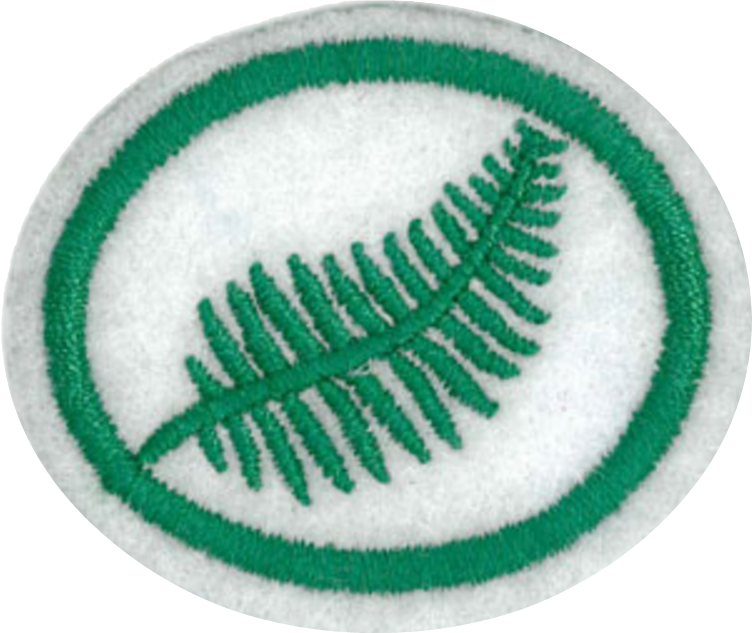|
|
| (9 intermediate revisions by 2 users not shown) |
| Line 1: |
Line 1: |
| − | <languages /><br />
| + | {{HonorSubpage}} |
| − | <noinclude></noinclude>
| |
| − | {{honor_desc/es | |
| − | |stage=00
| |
| − | |honorname=Helechos
| |
| − | |skill=2
| |
| − | |year=1944
| |
| − | |category=Estudio de la naturaleza
| |
| − | |authority=Asociación General
| |
| − | |insignia=Ferns_Honor.png
| |
| − | }} | |
| − | | |
| − | {{Honor_Master/es|honor=Helechos|master=Naturaleza|group=Flora}}
| |
| − | | |
| − | {{IAConnection/es|[[Investiture_Achievement/Explorer/Nature_Study/es|EXPLORADOR DE CAMPO Y BOSQUE Estudio de la naturaleza]]|(como una de dos opciones) completar el requisito #6 de esta especialidad|Esta especialidad es una elección popular para la especialidad de la categoría de Estudio de la naturaleza de nivel de destreza 2 o 3 requerido para los EXPLORADORES DE CAMPO Y BOSQUE.}}
| |
| − | | |
| − | | |
| − | <noinclude></noinclude>
| |
| | <section begin="Body" /> | | <section begin="Body" /> |
| | {{ansreq|page={{#titleparts:{{PAGENAME}}|2|1}}|num=1}} | | {{ansreq|page={{#titleparts:{{PAGENAME}}|2|1}}|num=1}} |
| Line 72: |
Line 55: |
| | {{ansreq|page={{#titleparts:{{PAGENAME}}|2|1}}|num=6}} | | {{ansreq|page={{#titleparts:{{PAGENAME}}|2|1}}|num=6}} |
| | <noinclude></noinclude> | | <noinclude></noinclude> |
| − | <!-- 6. Dibujar o fotografiar 10 tipos de helechos e identificarlos correctamente. --> | + | <!-- 6. Dibujar o fotografiar 10 tipos de helechos e identificarlos correctamente. --> |
| | | | |
| | {{clear}} | | {{clear}} |
| Line 98: |
Line 81: |
| | {{ansreq|page={{#titleparts:{{PAGENAME}}|2|1}}|num=7}} | | {{ansreq|page={{#titleparts:{{PAGENAME}}|2|1}}|num=7}} |
| | <noinclude></noinclude> | | <noinclude></noinclude> |
| − | <!-- 7. In addition to the common ferns there are fernlike plants known as club mosses and horsetails. Be able to recognize two club mosses and one horsetail. How are they similar to ferns? --> | + | <!-- 7. Además de los helechos comunes hay plantas conocidos como musgos y colas de caballos. Ser capaz de reconocer dos tipos de musgos y una cola de caballo. ¿Cómo son similares a los helechos? --> |
| − | ===Club mosses===
| |
| − | {|border=0
| |
| − | |[[Image:Lycopodium clavatum clavatum1.jpg|thumb|200px|left|Lycopodium clavatum (Ground pine)]]
| |
| − | |[[Image:Lycopodium squarrosum.png|thumb|200px|right|Lycopodium squarrosum (Tassle fern)]]
| |
| − | |[[Image:Lycopodium serratum tougesiba01.jpg|thumb|200px|right|Lycopodium serratum (Toothed clubmoss)]]
| |
| − | |}
| |
| | | | |
| − | Club moss is a term that describes the botanical family ''Lycopodiaceae'' (a family is one level up the hierarchy from the genus). Club mosses bear spores on specialized structures at the apex of a shoot; they resemble a tiny battle club, from which the common name derives. They are non-flowering and do not produce seeds.
| + | {{clear}} |
| − | ;Lycopodium clavatum (Ground pine): This plant resembles a tiny pine tree. It grows in forests and sends runners underground form whence other plants spring.
| |
| − | ;Lycopodium serratum (Toothed clubmoss): This plant is similar in appearance to ''L. clavatum''. It prefers sandy to loamy soils in dappled or deep shade. The water-repellant spores can be used as a lubricant to keep things from sticking together.
| |
| − | ;Lycopodium squarrosum (Tassle fern): These plants are also not true ferns. They are also similar to ''L. clavatum'', but they have "branches" which hang from above somewhat like a weeping willow.
| |
| | | | |
| − | ===Horsetails===
| + | {{clear}} |
| − | {|border=0 | |
| − | |[[Image:Equisetum-arvense-vegetative.JPG|thumb|250px|left|Equisetum arvense (Field Horsetail)]]
| |
| − | |[[Image:Equisetum palustre detail.jpeg|thumb|250px|right|Equisetum palustre (Marsh Horsetail)]]
| |
| − | |}
| |
| | | | |
| − | Horsetails, like club mosses and ferns bear spores rather than seeds. Horetails are in the order ''Equisetales'' which consists of a single family called ''Equisetaceae''. There are 15 species in this order.
| + | {{clear}} |
| − | ;Equisetum arvense (Field Horsetail): Equisetum arvense is a rather bushy perennial with a rhizomatous stem formation native to the northern hemisphere. These horsetails may have sterile or fertile stems. Sterile stems start to grow after the fertile stems have wilted. The sterile stems tend to be much taller and bushier, with the jointed segments being around one inch long with a diameter of about 1/20th of an inch. These segments contain one set of whorled, slender, erect branches each. Some stems can have as many as 20 segments and be as tall as 2-24 inches. The fertile stems tend to be half as tall as the sterile stems and also tend to be more succulent.
| |
| | | | |
| − | ;Equisetum palustre (Marsh Horsetail): E. palustre is a perennial horsetail, growing between 10 to 50 centimeters (4" to 20"), in rare cases up to 1 meter (3'). Its fertile shoots, which carry ears, are evergreen and shaped like the sterile shoots. The rough, furrowed stem is 1 to 3 mm in diameter with usually 8 to 10 ribs, in rare cases 4 to 12. It contains whorled branches. The tight-fitting sheaths end in 4 to 12 teeth. The lower sheaths are dark brown and much shorter than the sheaths of the main shoot. The central and vallecular are about the same size, but the carinal channels are much smaller. The central channels measure about one sixth of the diameter of the stem.
| + | {{clear}} |
| − | <br style="clear:both">
| |
| | | | |
| | <noinclude></noinclude> | | <noinclude></noinclude> |
| Line 127: |
Line 95: |
| | <noinclude></noinclude> | | <noinclude></noinclude> |
| | ==Referencias== | | ==Referencias== |
| − | [[Category:Adventist Youth Honors Answer Book/es]]
| |
| | <noinclude></noinclude> | | <noinclude></noinclude> |
| − | <section end="Body" />
| + | {{CloseHonorPage}} |


